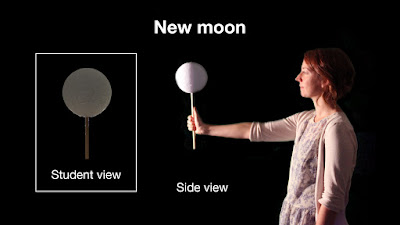What Are the Moon Phases Crescent?
If
you are interested in the subject of astrology and have studied the various
moon phases, you will be aware of the different effects that each phase has on
the Moon. However, the full Moon phases also have significant impacts on the
Earth and the climate at large. Understanding these influences is vital to
understanding our planet's climate.
The
full Moon is the third closest to the Earth’s surface after the Sun and the
Moon. It is also the strongest force in the solar system. Because of this, it
affects the climates of both the poles and equator. The Moon Phases affects the
Moon by affecting the Earth-moon relationship. The local time on the Moon never
exactly matches the local time on the Earth-moon plane.
The
lunar cycle or Moon phase is simply the phase of the Moon that the Moon appears
to be rotating on its orbit around the earth. The Moon's waxing gibbous phase
lasts for about three days every lunar month. This phase can last from about
three to five days depending upon the Moon position in the sky. In the waxing
gibbous phase the Moon appears to move away from the Earth-sun position and
enters into a temporary recession which will eventually come to an end.
The second, fourth and final full moon phases represent the New Moon, Full Moon, First Quarter, Gibbous Moon, and Second Quarter. These are the longest and shortest of the Moon Phases. During these periods the Moon appears to move closer to the Earths center and to move away from the Sun. During the New Moon this also allows the Moon to slightly influence the climate on the surface of the earth, although this is relatively small.
The
third, fourth and fifth full moon phases represent the Fourth, Full moons. The
Moon appears to move away from the Earth-sun position once again and appears to
be moving closer to the southern skies. This period is generally known as the
first quarter. The second half of the Moon consists of full moon rises and this
is the best time to try out new planting beds or growing plants. The Gibbous
Moon stage, also known as the last quarter, represents the stage when the Moon
completely sets after a new Moon has been born.
The
sixteenth and seventh moon phases represent the Second, Third and Fourth
quarters. At this time the Moon begins to move away from the Earth-sun position
and it will enter into a permanent recession which will last about thirty days.
The Gibbous Moon stage, or the full moon after the new Moon has been born, is
when the Moon is closest to the horizon and the surface of the earth is
illuminated by the Sun. The Second and Third quarters have an abundance of
water and vegetation, which will flourish during this stage. The Full Moon
represents a period when the Moon is completely hidden by the Sun and there is
a period of peace and rest for most plant life.
There
are many different lunar cycles that occur each year and are named after the
time of year they occur. For instance, a New Moon occurs when the Moon is about
to make a full circle around the earth and a Virgo Moon when it has passed its
full circle. A Capricorn Moon occurs just before the first day of spring. Each
of these phases represents a different phase of the Moon and will influence
your astrology in a different way. You can use these moon phases to chart your
own personal lunar cycle for insight and knowledge.
The crescent and the half-moon symbolize complete separation and the beginning of another cycle. When this happens the Moon begins to move away from the Sun and it will appear closer and more distant. It is at this time that many people believe the beginning of another new cycle to be approaching. Each of these phases represents a different aspect of the Moon and will help you understand your personal astrology. You can learn a great deal about yourself using the moon's influence.

